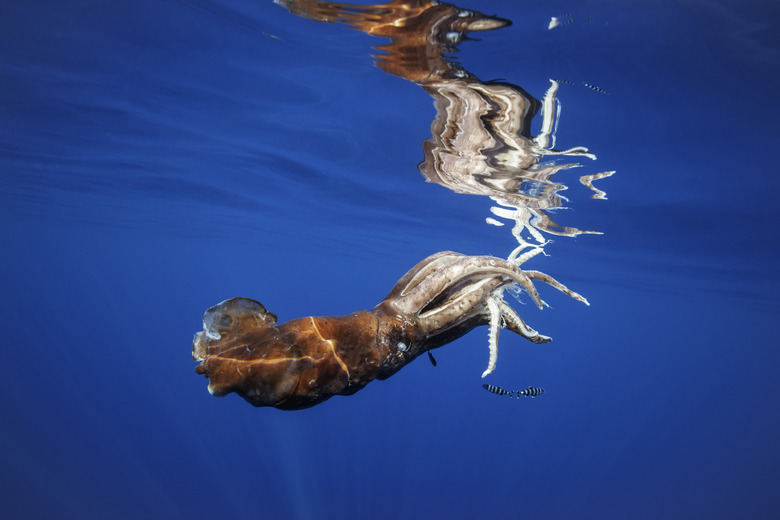The Physical And Behavioral Adaptions Of The Giant Squid
The giant squid, also known by its scientific name Architeuthis dux, is among the least seen and studied creatures of the sea. No live giant squid was even seen in its natural habitat until 2006.
The giant squid, which can get as big as 70 feet long when most squids top out a 12 inches, is attached to many myths. In truth, giant squid adaptations arose to allow it to survive and thrive in the deep ocean where light is very limited.
Giant Squid Size
Giant Squid Size
The giant squid size could be considered an adaptation that allows it to act as a top predator. Growing up to 70 feet long (with an average size of ~43 feet), this strong and intimidating predator can easily attack and kill its prey that can range from large fish to other giant squids.
It's also hypothesized that its giant size acts as a defense mechanism to ward off any potential predators. Scientists believe that giant squid have very few predators because of their giant size. The only true predator these squid have (besides other giant squid) are sperm whales.
Sperm whales are also giants of the deep growing on average to 49-59 feet. This makes them quite the match for giant squid and giant squid remains are often found in the stomachs of these whales.
These Deep Sea Squid Need Large Eyes
These Deep Sea Squid Need Large Eyes
Giant squids have eyes as big as 10 inches wide. The large retinas allow the animals to gather a great deal of light.
The eyes are also capable of seeing the luminescent lights produced by some creatures in the dark depths of the ocean. The squid can likely get to that kind of prey faster than other creatures.
Movement
Movement
It's not quite jet propulsion, but the giant squid does use a similar system to get around. It sucks water into a funnel in its mantle, which is the main part of its body. This water is then forced back out again, and the squid uses the force of that action to propel itself in one direction.
The more water it takes in at once, the faster it will go when the water is forced out. This action also gathers oxygen as the water is passed through its gills.
Arms and Tentacles
Arms and Tentacles
Giant squids have eight arms and two tentacles. A mature giant squid can measure up to 33 feet from the top of its head to the bottom of its arms. It can get even longer when it extends its tentacles.
Both appendages draw prey in towards the animal's mouth, but only the tentacles are also used to catch prey. Suckers line the inside of the appendages.
These suckers have sharp, rough edges that can attach themselves to the animal's food and cut into it if necessary. It typically draws the food into its beak, which is sharp enough to crush any prey. As of 2011, the giant squid's actual diet is unknown since none had been caught with food in it. Based on its beak, it likely pursues fish and other squids.
Defense
Defense
A jet of dark ink is the first line of defense for the squid. It stands to reason that they can use jet propulsion to escape from a predator quickly, and apparently fight with the suckers on the tentacles too.
It is known that giant squids are preyed upon by whales since beak remains have turned up in whale stomachs. The skin of sperm whales sometimes shows sucker marks that could only have come from a desperate giant squid.
Cite This Article
MLA
Ames, Hayley. "The Physical And Behavioral Adaptions Of The Giant Squid" sciencing.com, https://www.sciencing.com/physical-behavioral-adaptions-giant-squid-8462698/. 22 November 2019.
APA
Ames, Hayley. (2019, November 22). The Physical And Behavioral Adaptions Of The Giant Squid. sciencing.com. Retrieved from https://www.sciencing.com/physical-behavioral-adaptions-giant-squid-8462698/
Chicago
Ames, Hayley. The Physical And Behavioral Adaptions Of The Giant Squid last modified March 24, 2022. https://www.sciencing.com/physical-behavioral-adaptions-giant-squid-8462698/
